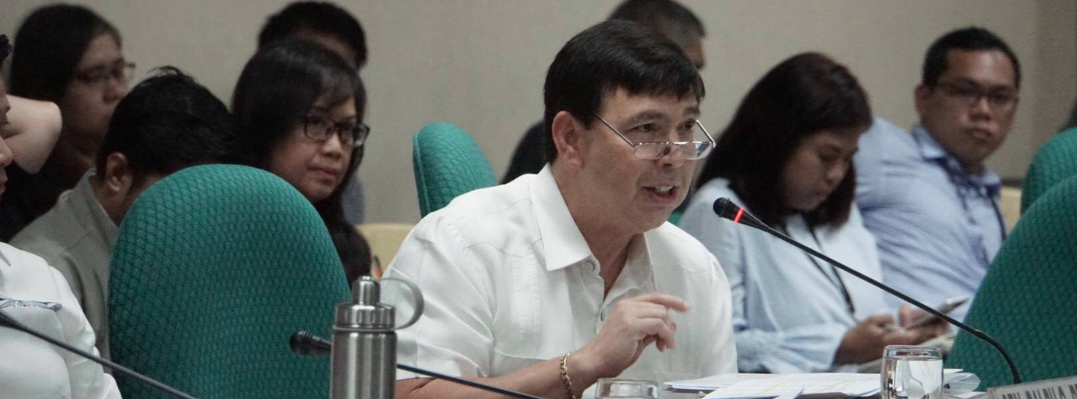Recto to PNP: If you have money for P.5 M dogs, you certainly have for body cams
If the Philippine National Police (PNP) was able to ask for, and was given, funds to buy 48 bomb-sniffing dogs at a cost of P511,672 each, then it should also request funds for the acquisition of body cams for policemen, to be drawn from a P5.6 billion police modernization fund in the 2017 national budget.
Debunking PNP claims that it has no budget to buy body- and car-mounted cameras this year, Senate President Pro-Tempore Ralph Recto said the PNP had in fact received P1.9 billion from the Department of Budget and Management (DBM) last August 10 for the purchase of various equipment.
The Special Allotment Release Order (SARO) issued by the DBM for the procurement of P1.9 billion worth of machine guns, boats, motorcycles, anti-riot gear, body vests and “explosive detection dogs” identified the funding source as the Unprogrammed Appropriations of the General Appropriations Act for 2017.
If the PNP share of the 2017 Unprogrammed Appropriations is P5.634 billion, then it leaves a balance of P3.732 billion, enough to buy a sizeable quantity of body cams and dashboard cameras for police cruisers, Recto said.
“Hindi na kailangan maghintay sa susunod na taon. Mayroon nang mapagkukuhanan ngayon,” Recto said.
Recto said the PNP should have included the cameras in the wish list it sent to the DBM in two letters dated July 13 and 24 this year.
“By that time, mayroon nang clamor for body cams, sana isinama na nila. Pero mayroon pa namang natitirang pondo,” Recto said.
In the SARO for P1,901,472,364 that it released to the PNP, the DBM authorized the procurement of 12 lots of equipment.
These are: 103 light transport vehicles at a cost of P132 million; 126 personnel carriers (P245.2 million), 323 motorcyles (P31 million); 138 rubber boats (P343.4 million); 320 5.56mm light machine guns (P200 million); and 231 7.62 mm light machine guns (P252.4 million).
Also funded by the SARO are 2,248 waistcoat vests (P152.9 million); 11,245 undershirt “level 3-A” vests (P382.3 million); 160 sets of base radio (P88.5 million); 2 forklifts (P1.85 million); 1 lot of “civil disturbance management” equipment (P47.3 million).
Recto noted that waistcoats and body vests to be procured will cover only 8 percent of the actual number of policemen. “Kailangan dagdagan pa. This should be made standard police gear.”
There is also a P24.56 million allotment for 48 “explosive detection dogs,” with a unit price of P511,672, Recto said. “I am not yet ready to pass value judgement on that purchase but a half-million-peso dog should be as good as Scooby Doo.”
“’Yang P24 million na ‘yan, pwede nang ibili ng tig-P10,000 na body cam for 24,000 police officers. Or if 1 body cam will be used two shifts a day, for 48,000 policemen,” Recto said.
Recto said he is pleased with the request for the purchase of body vests as it would protect policemen in their hunt for terrorists, carjackers, and riding-in-tandem robbers.
But cameras, whether attached to suits or placed on dashboards of patrol cars, are also necessary crime-fighting tools as they aid in prosecution of persons about to be arrested and in the identification of criminals, Recto said.
“Why rely on lamppost CCTVs when the police can carry their own cams?” Recto asked.
“Kung may nanlaban at nasaktan ang pulis, mayroong video recording. It is also a tool against impunity and abuses. There are cases when the camera is more useful than the gun,” he said.
Recto sponsored the inclusion of the police modernization fund in the 2017 national budget after the PNP leadership complained of the lack of vehicles, guns, and other equipment in running after criminals.
“Kasama sa proposal ang pagbili ng police choppers, pagsasaayos ng 911 system, pero tila yata sa actual request ng Camp Crame, hindi pa naisama,” he said.
Under the General Appropriations Act for 2017, release of unprogrammed funds can only be triggered if revenue collections have been topped or if supported by new loans.
Recto said the same personnel protection gears should be given to the military personnel as well as enough ground and air ambulances that will ferry the wounded to well-equipped hospitals.


